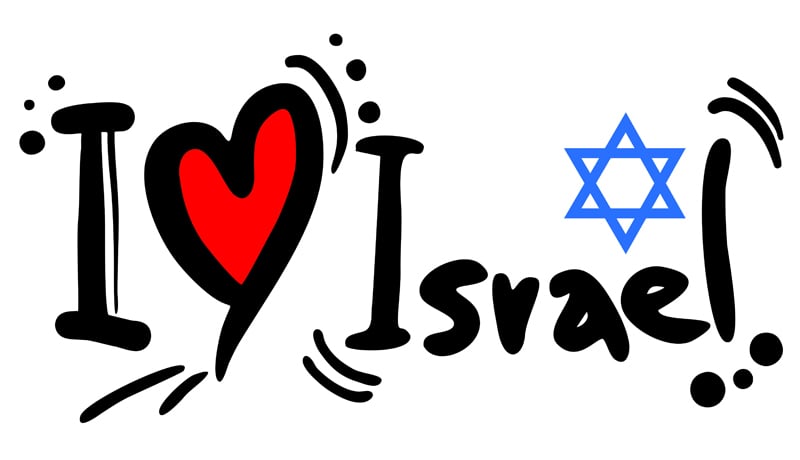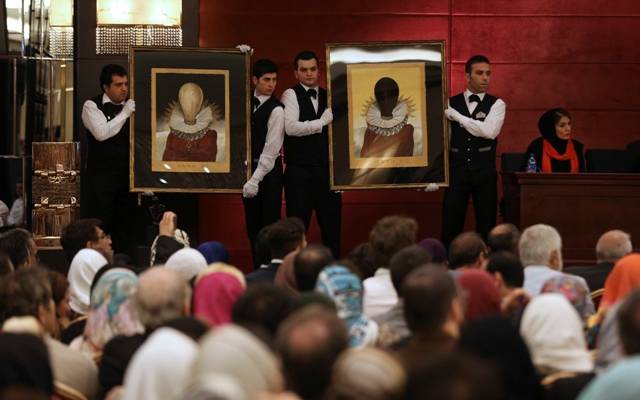An annual art auction in Tehran drew record sales of $7.4 million Friday, a sign of Iran’s emerging arts market that buyers hope will be buoyed by the recent nuclear deal with world powers.
The sale at Tehran’s high-end Azadi Hotel — the former Hyatt near Evin Prison — drew celebrities, collectors and businessmen hoping to walk away with the artworks there. Total sales were 12 percent higher than the previous year, though this year’s auction saw only 79 items sold, as opposed to 126 then.
Prices continue to rise for Persian pieces, and many hope that only will accelerate after the lifting of international sanctions.
Iranian “artworks should be introduced at the international level after the sanctions,” said Saeed Nikbkhat, an art collector looking at the pieces ahead of the sale. “Iranian art is a unique and precious art. I think world-class museums are interested in having them.”
The items for sale at the Tehran art show shied away from politics, instead offering abstracts, Farsi calligraphy and pastoral images in the thick-paint impasto style. Portraits and sculptures were also on the block, along with paintings of ancient scenes of the Persian empire or the mosques of Isfahan, a UNESCO World Heritage site.
Works by the famed late artist Sohrab Sepehari, also known for his poetry, sold for $873,000. Last year, three of his untitled paintings sold for $875,000. Works by the internationally known sculptor Parviz Tanavoli had a starting price of about $100,000.
Among images of the art in a glossy magazine accompanying the sale, were advertisements for Porsche and Samsung flat screen televisions. Those companies, and others, hope to expand their markets into Iran after the deal, which was meant to force the Islamic Republic to limit its ability to enrich uranium in exchange for the lifting of some economic sanctions.
Whether or not the deal was successful remains to be seen.
Iran Deal Impacted Sales
Since the sanctions took hold, Iran’s wealthy have used art as an investment opportunity as international markets were off-limits. That’s seen art sold at the auctions, held every year since 2012, raise more and more money. Last year, the auction saw $6.6 million in sales.
“Most of the buyers are art collectors as far as I know,” said Rahim Rajabi, an art lover.
Even President Hassan Rouhani has praised the power of Iran’s art scene in powering the Islamic Republic’s economic engine. That’s after even music was banned briefly in Iran following its 1979 Islamic Revolution.
“Culture and arts are the driving forces for production and economy,” he said in May.
In a sign of support, Culture Minister Ali Jannati briefly appeared at the auction Friday.
Foreign customers were able to bid through local connections paying of their behalf. That’s despite Iran’s banking system still not being fully connected to the international market due to technical problems.
The identity of buyers is traditionally not revealed, but likely did not include any Americans, as other sanctions still largely bar US citizens from engaging in any business in the country.
But asked if the lifting of the nuclear sanctions had an effect on sales, auctioneer Hossein Pakdel simply said: “Do not have any doubt.”
By: AP

Do You Love Israel? Make a Donation - Show Your Support!
Donate to vital charities that help protect Israeli citizens and inspire millions around the world to support Israel too!
Now more than ever, Israel needs your help to fight and win the war -- including on the battlefield of public opinion.
Antisemitism, anti-Israel bias and boycotts are out of control. Israel's enemies are inciting terror and violence against innocent Israelis and Jews around the world. Help us fight back!
See our Privacy Policy

